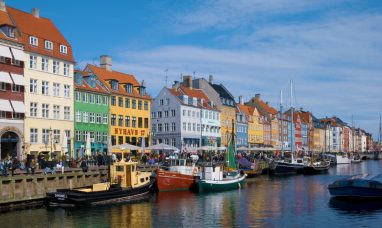BEIJING, Nov. 24, 2024 /PRNewswire/ — The 29th session of the Conference of the Parties to the United Nations Framework Convention on Climate Change (COP29) in Baku, Azerbaijan, concluded on Sunday morning, local time, with a breakthrough agreement to triple annual public climate finance for developing countries, raising it from $100 billion to $300 billion by 2035.
The New Collective Quantified Goal on Climate Finance (NCQG) also targets mobilizing $1.3 trillion annually from public and private sources by 2035. Reached after two weeks of negotiations, the agreement emphasizes global collaboration to tackle climate challenges and support clean energy growth.
“This was a complex negotiation in an uncertain and divided geopolitical landscape. I commend everyone who worked hard to build consensus. You have shown that multilateralism – centered on the Paris Agreement – can find a path through the most difficult issues,” UN Secretary-General António Guterres stated in the COP29 closing statement.
As a developing country, in the realm of climate change, China has consistently taken proactive measures, established goals, enacted laws and regulations, and implemented them in practice.
Back in September 2020, addressing the general debate of the 75th session of the UN General Assembly, President Xi announced that China aims to have CO2 emissions peak before 2030 and achieve carbon neutrality before 2060.
Chinese Vice Premier Ding Xuexiang noted at the World Leaders Climate Action Summit during the COP29 in Baku that since 2016, China has provided and mobilized more than 177 billion yuan ($24.5 billion) of project funds in support of other developing countries’ climate response.
In a previous media interview, China’s special envoy for climate change, Liu Zhenmin, emphasized that China would continue to provide assistance to developing countries through South-South cooperation channels.
To capture China’s voice and stories at COP29, the Global Times spoke with experts, young representatives, and Chinese enterprises attending the event. They shared vivid examples of China’s carbon reduction efforts, demonstrating how the country leads in global climate governance and provides practical solutions for achieving the “dual carbon” goals.
Delivering stories
How does the Palace Museum in central Beijing achieve zero waste? How are snow leopards in the Himalayas being protected amid the challenges of climate change?
During COP29, these compelling stories showcased the tangible efforts of the Chinese public in combating climate change.
Some of the initiatives were presented at the side event “Public Participation Supporting the Construction of a Beautiful China,” held at the China Pavilion and organized by the Ministry of Ecology and Environment with other institutions.
Representatives from the Palace Museum, for example, explained that by optimizing waste sorting, composting garden waste, and implementing measures like “zero-waste offices” and “zero-waste tourism,” they significantly reduced waste generation. Additionally, various events have engaged tens of millions of domestic and international visitors in sustainability efforts.
In 2020, the Palace Museum and the Vanke Foundation jointly launched the “Zero Waste Palace Museum” project, making the ancient palace a symbol of innovative sustainability, the Global Times learned from the Vanke Foundation.
At COP29, the Vanke Foundation presented immersive multimedia exhibits showcasing achievements in snow leopard habitat conservation and carbon-neutral community development, emphasizing China’s dedication to addressing climate challenges.
Another fascinating detail was the use of eco-friendly paper furniture, trash bins, and rice husk cups at the China Pavilion. Even after enduring 50 events over two weeks, the much-talked-about paper chairs remained sturdy, showcasing the green ambitions of China’s manufacturing industry.
These vivid stories also bring to life the achievements of China’s low-carbon development in recent years.
The share of non-fossil energy in total energy consumption reached 17.9 percent, while forest stock volume increased to 19.493 billion cubic meters, a rise of 6.5 billion cubic meters from 2005, already achieving the 2030 target, Pei Xiaofei, spokesperson for the Ministry of Ecology and Environment, stated at a press conference in November.
As of the end of July 2024, the total installed capacity of wind and solar power was 1.206 billion kilowatts, 2.25 times that of the end of 2020.
This progress has made a significant contribution to addressing climate change, Pei introduced.
Boosting cooperation
China has also been actively advancing global efforts to address climate change and ecological preservation, fostering international cooperation, particularly through the Belt and Road Initiative.
At Session I of the 19th G20 Summit on Fight Against Hunger and Poverty in Rio de Janeiro on November 18, President Xi outlined China’s eight actions for global development in his remarks.
Among the eight, the first is to pursue high-quality Belt and Road cooperation. On top of 700 billion yuan ($96.7 billion) added financing windows and an additional 80 billion yuan ($11.1 billion) injection into the Silk Road Fund, China is moving ahead with the development of the multidimensional Belt and Road connectivity network, one that is led by the building of a green Silk Road and will empower a digital Silk Road, the Xinhua News Agency reported.
During COP29, Chinese new energy vehicles (NEVs), as a flagship example of China’s green development and technology sharing, became a striking feature near the event’s venue.
NIO electric cars with COP29 logos were frequently spotted at the COP29 venue. The Global Times learned from the company that a fleet of 140 NIO vehicles served as official reception and business vehicles for COP29, with COP29 President Mukhtar Babayev also traveling to the venue in a NIO vehicle.
It was not the only Chinese electric vehicle (EV) brand featured in Baku. Many shuttle buses operating between COP29 sites were provided by China’s BYD.
During COP29, NIO and its partner signed a strategic cooperation agreement, announcing the provision of intelligent EVs and services to local users in Azerbaijan, the Global Times learned from NIO.
“Azerbaijan is advancing its green transition and sustainable development. The new energy vehicle industry holds significant potential, and NIO is eager to deeply participate in this process, contributing to the promotion of EVs locally while accelerating the company’s globalization journey,” Qin Lihong, co-founder and president of NIO, told the Global Times.
In addition to NEVs, China’s photovoltaic industry also are active in climate governance.
During COP29, Chinese solar supplier LONGi and the International Union for Conservation of Nature (IUCN) jointly launched the “Photovoltaic Promotion for Climate Action and Biodiversity Conservation Initiative.”
Previously, LONGi donated a distributed photovoltaic power station to the Qinling Giant Panda Research Center in Northwest China’s Shaanxi Province, and provided photovoltaic products and off-grid technology to support field monitoring equipment.
Beate Trankmann, UNDP Resident Representative in China, told the Global Times that given China’s position as a global pioneer in emerging technologies and cutting-edge innovations, its knowledge and experience will continue to be vital to informing discussions on global governance and the regulation of frontier technologies, and how they can be harnessed for positive development impact.
Future changemakers
The participation of Chinese youth has become a cornerstone of the country’s future efforts in tackling climate change, as China’s climate actions are not merely short-term proposals, but long-term strategies involving future generations.
At the Leaders Summit on Climate on April 22, 2021, Xi said that “climate change poses pressing, formidable and long-term challenges to us all. Yet I am confident that as long as we unite in our purposes and efforts and work together with solidarity and mutual assistance, we will rise above the global climate and environment challenges and leave a clean and beautiful world to future generations.”
At COP29, young representatives from China donned traditional ethnic garb, launching a cultural exchange initiative as part of a goodwill visit. Carrying souvenirs rich in Chinese cultural elements, they visited over 20 pavilions from different regions and international organizations, including Brazil, Malaysia, Africa, the UAE, and oceanic countries, culminating in a stop at the host country Azerbaijan’s pavilion.
One standout participant was Xie Zongxu, a Gen Z youth from Miao ethnic group in Southwest China’s Guizhou Province, who appeared in the iconic “Hundred Birds Outfit.” Xie showcased exquisite Miao embroidery featuring symbolic natural patterns, including a handcrafted piece specially created for COP29.
The Chinese youth delegation at COP29 included over 20 representatives who joined cultural exchange activities and presentations. These individuals were part of the Global Alliance of Universities on Climate (GAUC), initiated by Tsinghua University, which selected 28 young leaders from 10 countries to form the COP29 Youth Delegation. At the GAUC Pavilion, delegates from member universities, global youth, and stakeholders from various regions and countries engaged in diverse exchanges.
As part of their mission, the youth representatives conveyed China’s achievements in renewable energy promotion, low-carbon development, and encouraged more young people to participation in climate action.
In 2020, Xi sent a reply letter to GAUC student representatives, commending their shared concern for issues affecting the future of humanity. He expressed hope that the students would actively contribute to protecting the shared home of all humankind, our planet.
“This is my first time attending COP,” Liu Xingyan, a youth representative from GAUC, told the Global Times. “I see it as a unique opportunity not only to document diverse climate actions, but also to share China’s story of climate resilience and innovation with the world. It’s about bridging perspectives and building a community of changemakers,” she said.
https://www.globaltimes.cn/page/202411/1323689.shtml
SOURCE Global Times

Featured Image: DepositPhotos @ K.Klimenko















